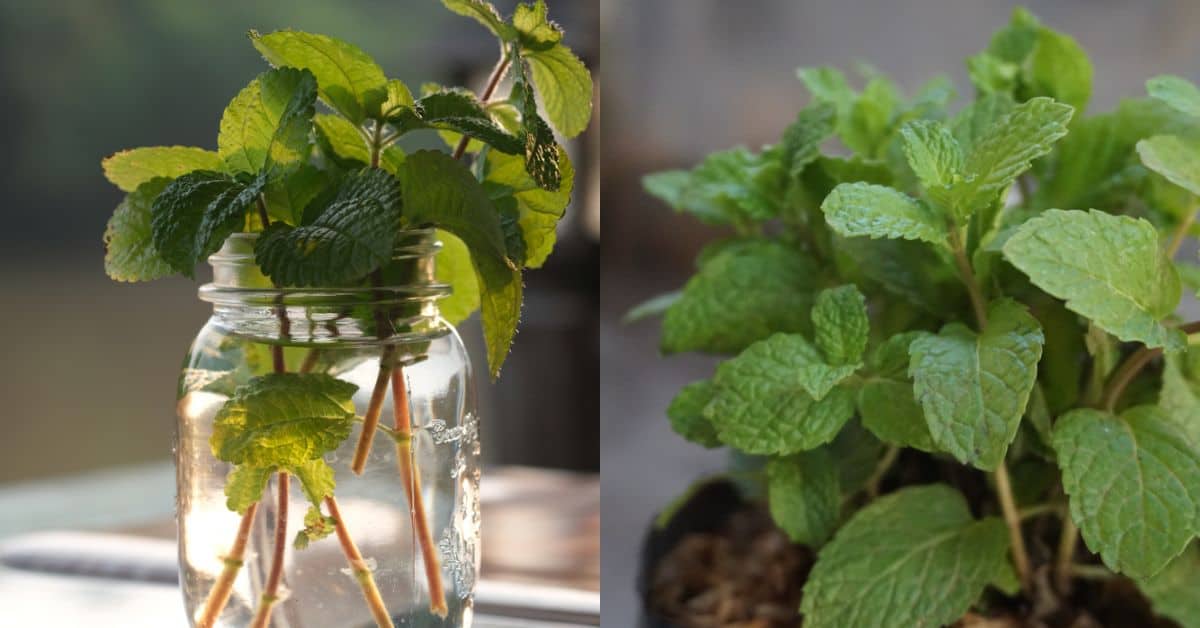
Mint (Mentha spp.) is an aromatic, perennial herb of the Lamiaceae family.
A vigorous grower and spreader, mint has enjoyed a long history of use in cuisine, traditional medicine, and aromatherapy.
Its name is derived from a story in Greek Mythology. Minthe was a beautiful and lonely water nymph who fell in love with Hades, the god of the dead and king of the underworld. When his wife, Queen Persephone, discovered their affair, she transformed Minthe into a mint plant in revenge.
Found thriving next to lakes, rivers, and other freshwater sources on every continent, mint prefers a cool, moist, and partially shaded spot in the garden. But because mint is so highly adaptable, it will grow well in practically any setting.
Mint is hardy in USDA zones 5 through 9, overwintering in temperatures as low as -20°F. But when you don’t want to forgo a fresh source of mint through the winter, it’s easy enough to bring mint indoors.
And since mint is such a versatile herb, it’s well worth a spot on a sunny windowsill.
About the Mint Plant…
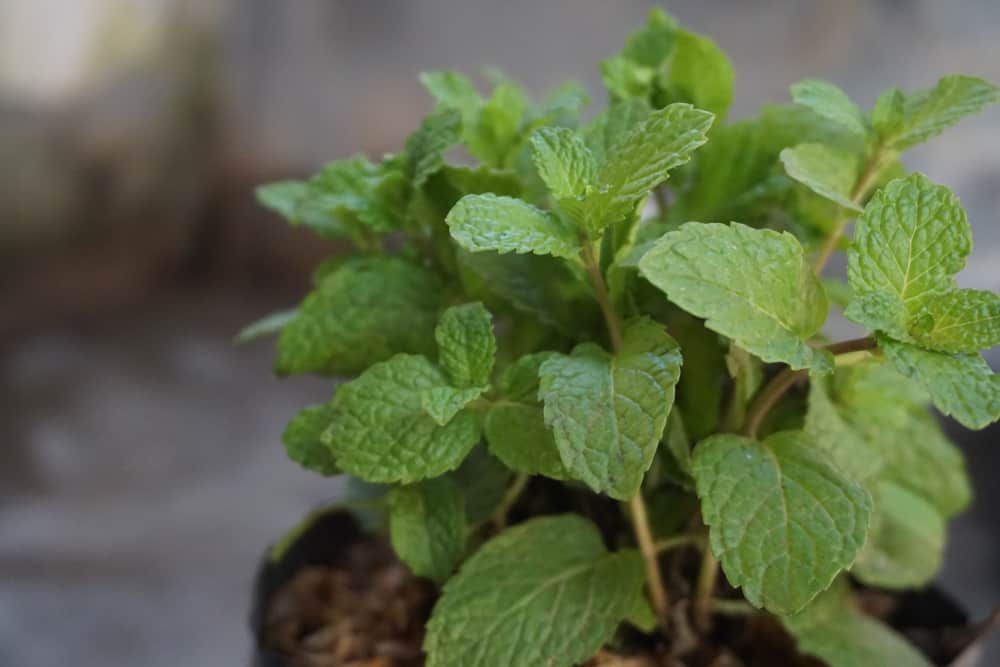
Native to temperate areas in Europe, Africa, and Asia, the Mentha genus includes around 25 species of mint.
Although each variety has its own unique characteristics, in general mint plants possess erect, branching square stems with opposing pairs of leaves in shapes ranging from oblong to oval to spear tipped.
Most often the foliage is covered in tiny hairs with a serrate edge. The color of the foliage may be dark green, greyish green, purple, blue, or pale yellow, depending on the cultivar.
Mint plants are fast growing and can spread quickly in the garden, self propagating with horizontal runners and underground rhizomes.
When left to their own devices, they can easily reach a height of 2 to 3 feet in a single season.
Because mint roots grow very close to the surface of the soil, they are excellent specimens for container gardens. Choose long and shallow pots to take advantage of its spreading growth habit.
Mint Varieties:
Spearmint (Mentha spicata)
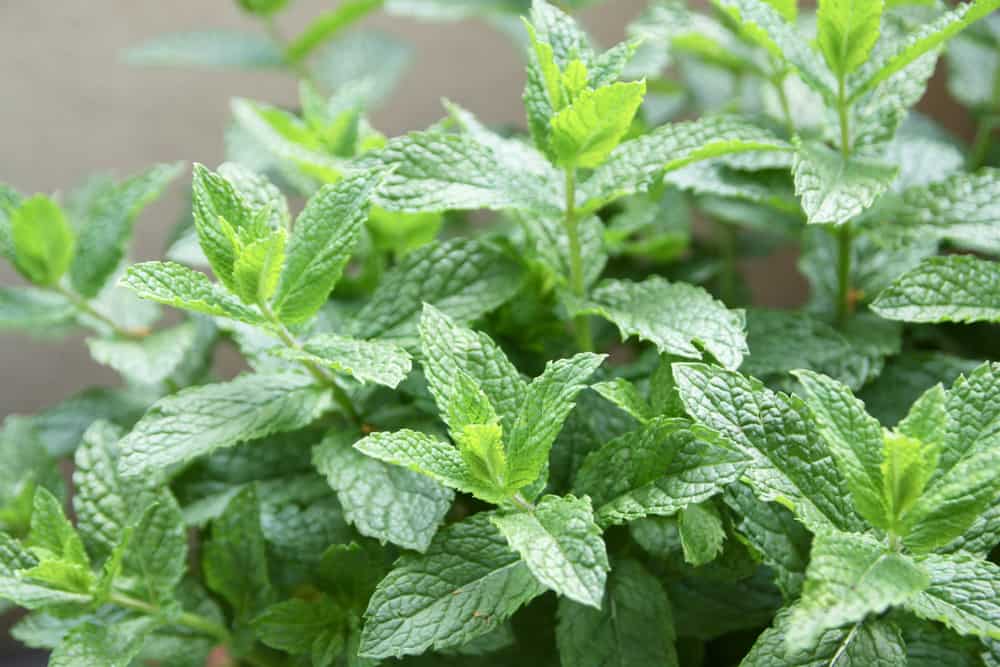
The most common variety of mint, when you see plants labeled as ‘mint’, they are most likely spearmint.
Because it contains less menthol than peppermint, spearmint is best used in savory cuisine and sauces, as well as in cold drinks, cocktails, and teas.
Peppermint (Mentha piperita)

A cross between spearmint and water mint, peppermint has been used for thousands of years as an herbal medicine.
With a sharp and fresh taste followed by an icy cool sensation, peppermint is an excellent addition to chocolatey desserts, ice cream, teas, and potpourris.
Apple Mint (Mentha suaveolens)
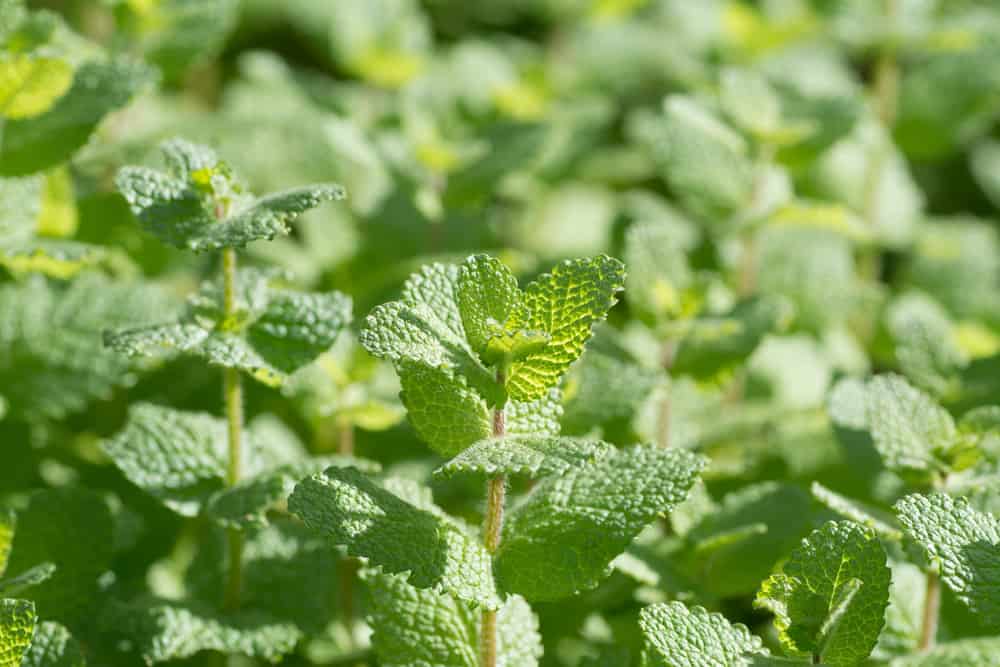
Apple mint is notable for its fuzzy and fragrant leaves, and has a fruity and minty flavor. It’s perfect for making iced and hot teas, salads, and homemade jelly.
Chocolate Mint (Mentha piperita ‘Chocolate’)
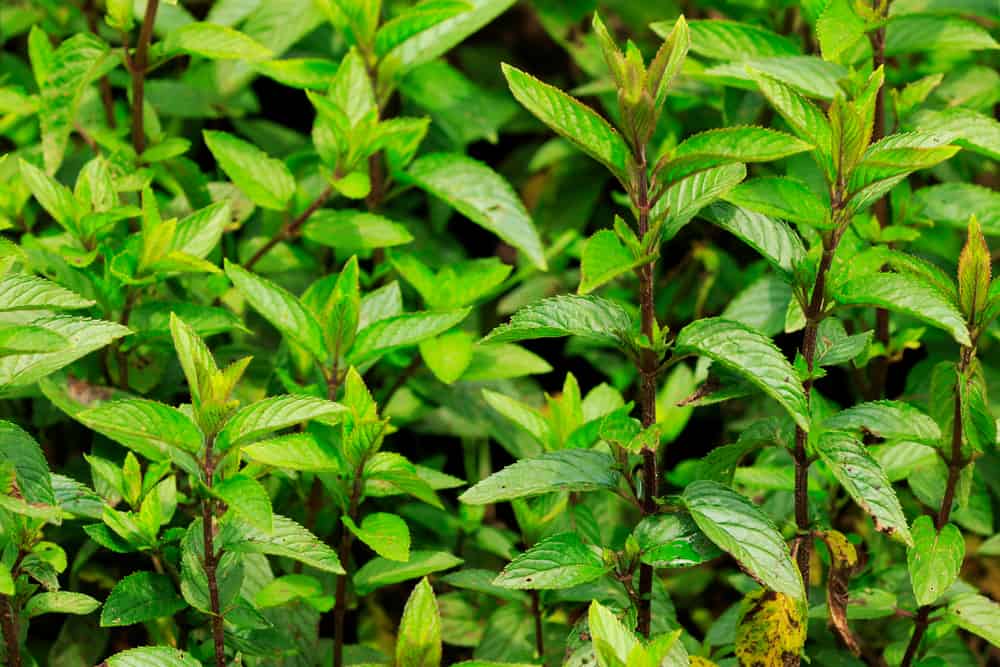
Offering just a subtle hint of chocolate among the minty-ness, chocolate mint leaves are great in deserts, breads, and teas.
Orange Mint (Mentha piperita citrata)
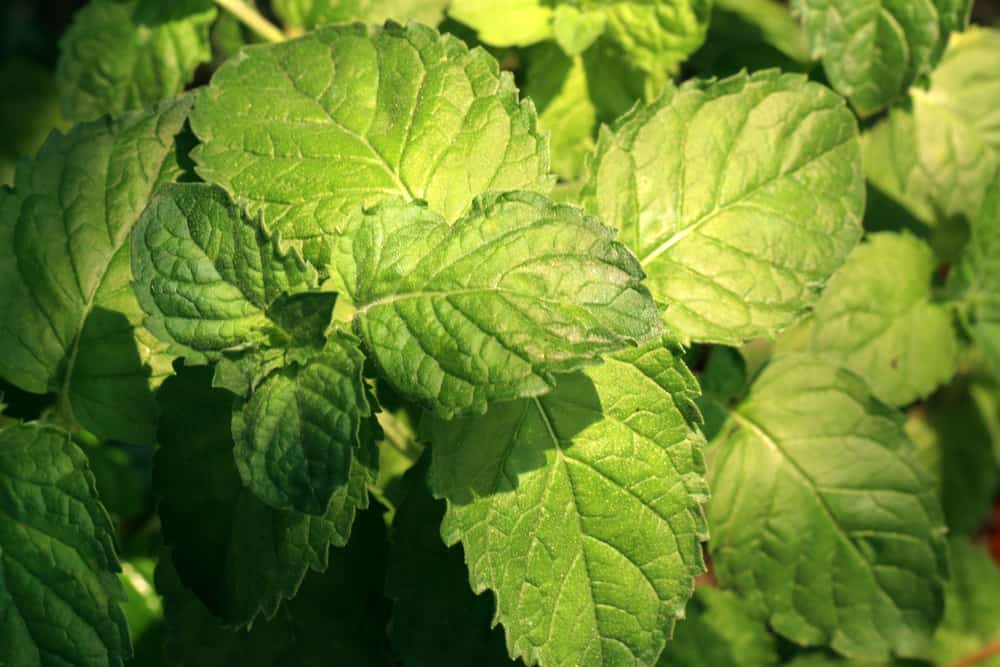
Orange mint, as you would expect, has a mild citrusy flavoring and is especially good in salads, sauces, and teas.
Lavender Mint (Mentha piperita ‘Lavendula’)
With floral overtones, lavender mint leaves are wonderful fresh in teas, or dried for potpourris and homemade soaps, lotions, lip balms, and shampoos.
Mint Growing Conditions
Mint is an easy enough plant to care for, indoors and out.
When cultivating this herb inside, there are a few things you must keep in mind so that your mint plant is happy and productive.
Light Requirements
Although mint can tolerate partial shade outdoors, in an indoor setting mint will need a good supply of sunlight to grow well.
Choose a sunny spot that receives at least 4 hours of direct sunlight per day.
Soil
Mint grows best in lighter soil with a pH of 6 to 7. It should also drain well while still retaining moisture.
You can purchase organic seed starting mixes (like this bag by Burpee Organics) or make your own by mixing peat moss, perlite, and sand in equal parts.
Water
Mint loves the water so it’s critical to keep the soil moist, but not too wet.
Choose a pot with drainage holes to prevent waterlogging and add a thin layer of mulch on the surface of the soil to reduce evaporative water loss.
Fertilizer
Like other herbs, mint shouldn’t need much fertilization. In fact, fertilizing too often can lead to less tasty foliage. If you think your mint plant needs a boost, use a very dilute compost tea or fish emulsion.
If you overdo it, flush out accumulated fertilizer and salts by running plain tap water through the soil for several minutes.
How to Grow Mint Indoors
From Cutting…
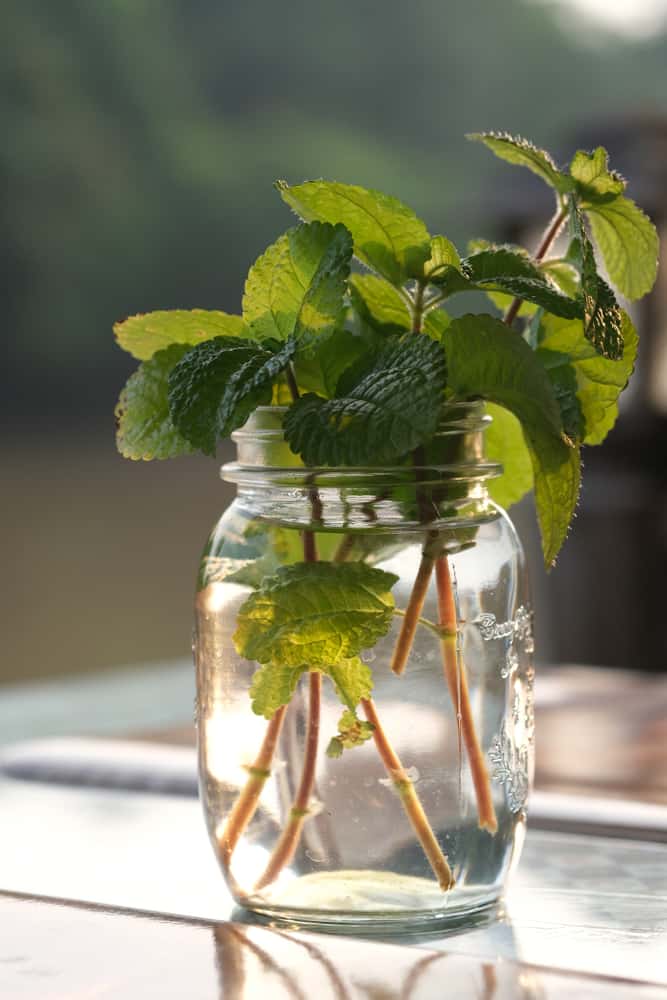
The simplest way to propagate a mint plant for indoor growing is to take some cuttings from an existing plant.
Choose mint sprigs that are several inches in length with new growth at the tip. Cut just below the axil, where the branching nodes meet the stem.
Place cuttings in a glass of water and set it in a spot that receives indirect sunlight. Roots will emerge in about two weeks.
From Division…
Because mint roots grow so close to the surface of the soil, it’s really easy to dig up part of an established plant to make a brand new indoor plant.
If dividing an outdoor mint plant, be sure to remove all soil from the roots to avoid introducing bugs to your indoor spaces.
Rinse the entire plant under the tap, paying extra care to the roots. Soak the plant in soapy water for 20 minutes before planting in fresh soilless mix.
From Seed…
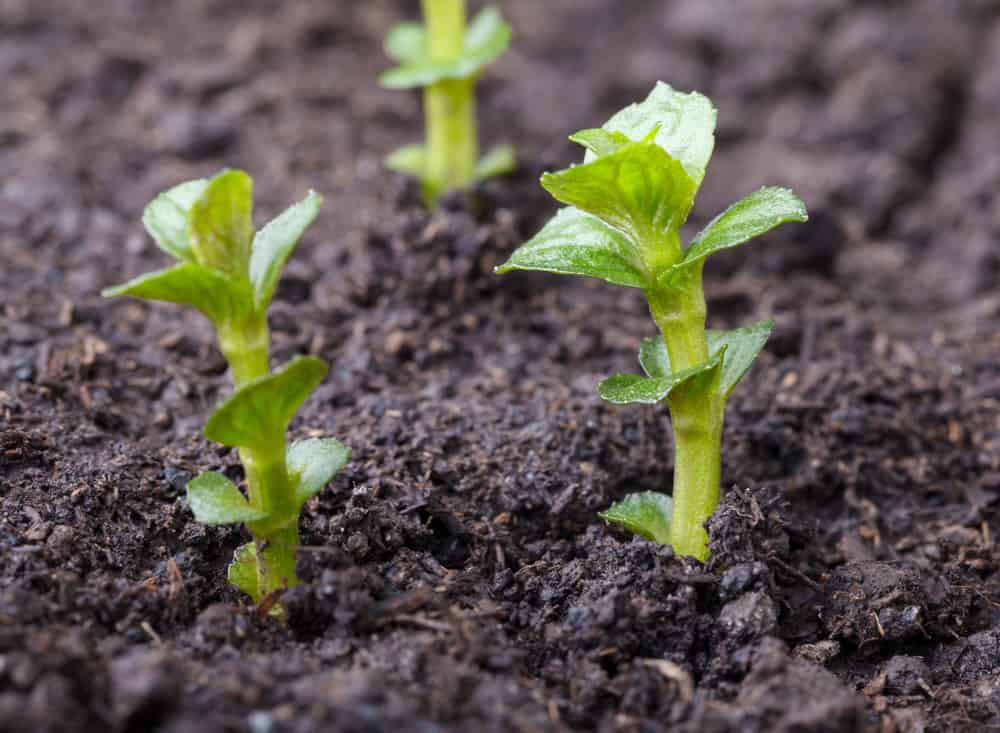
Growing mint from seeds is more challenging than cuttings or division, but it can be done. In general, mint has a low germination rate and hybrids are much less likely to grow true to type.
To increase the chances of success, try to stick to simple varieties, like spearmint.
Sow seeds over a soilless mix, ¼ inch deep. Mist the soil with a spray bottle and set it in a sunny location. Keep the soil evenly moist by giving it a spritz or two each day.
After a few weeks, the seeds should sprout but will be quite fragile. Take care when watering and allow seedlings to become well established before transplanting into another pot.
To give yourself the best chance of growing mint from seed, ensure you purchase high quality seeds. This pack of 1000 non-GMO spearmint seeds from Seeds Needs fits the bill.
How to Harvest Mint
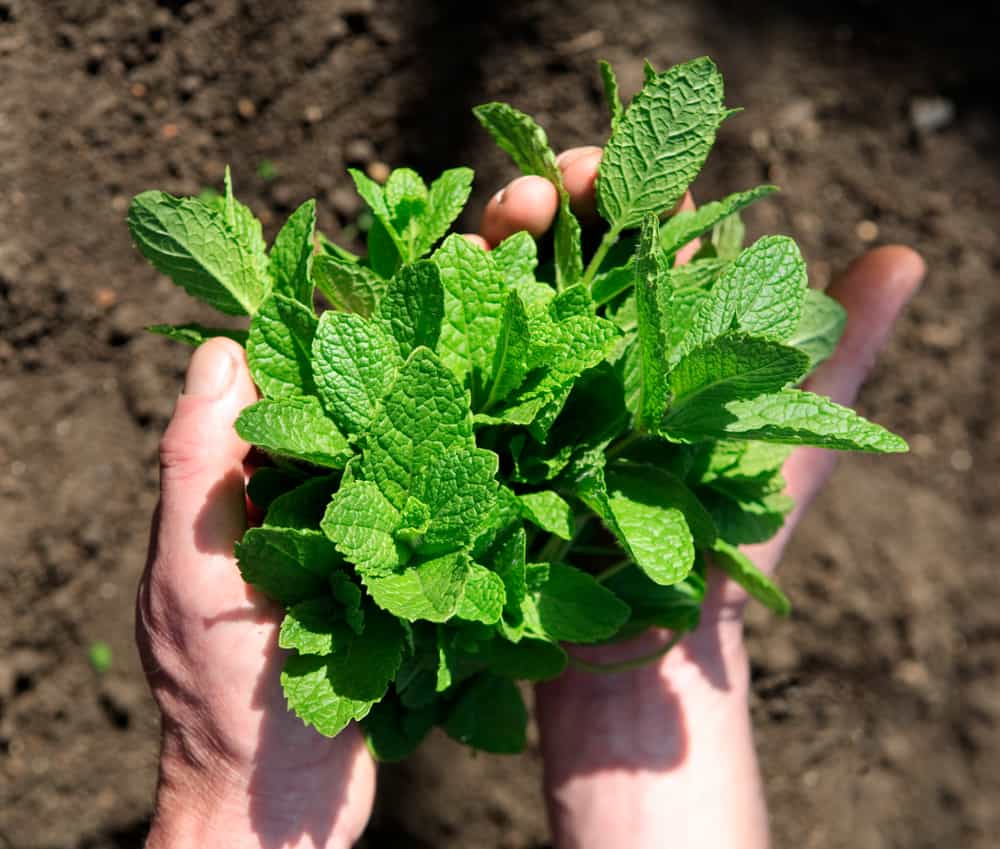
You can start harvesting from your mint plant as soon as it is about 4 inches tall. Frequent pruning also helps keep the plant productive and give it a fuller, bushier shape.
Younger growth is more flavorful than older, woody sprigs. Cut lengths of mint as you need them, leaving 1 inch of stem at the soil line.
You can prune mint in much the same way as you prune basil.
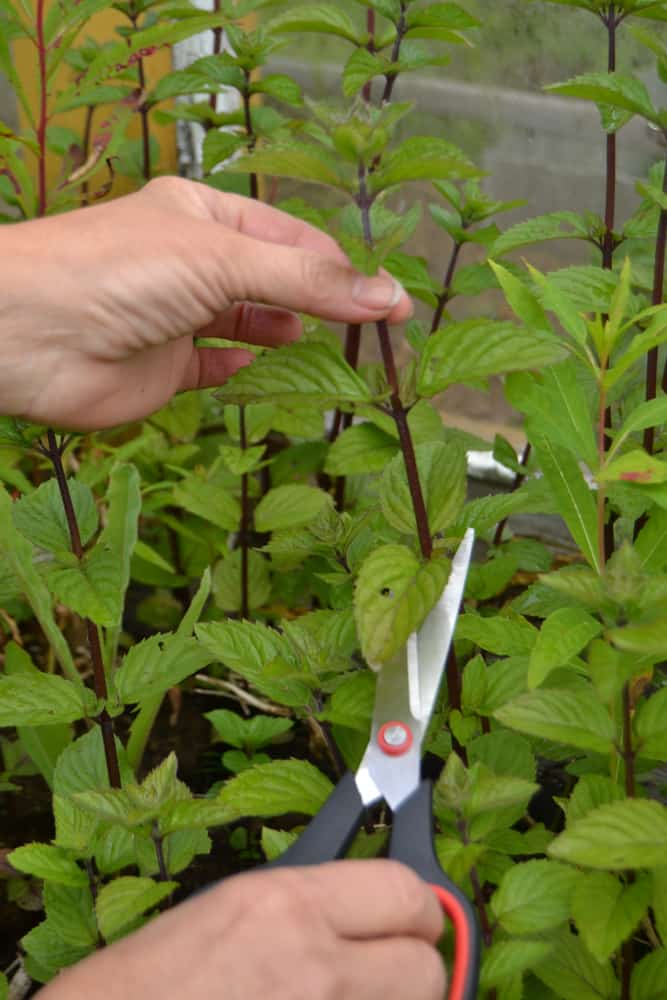
Although mint is best when it’s fresh, you can place cuttings in water to keep them from wilting before you’re ready to use them.
Hang bunches to air dry or put them in a bag to freeze for later use.
Take a look at our guide to drying herbs – including mint – for full instructions for drying your mint leaves.

Get the famous Rural Sprout newsletter delivered to your inbox.
Join the 50,000+ gardeners who get timely gardening tutorials, tips and tasks delivered direct to their inbox.

